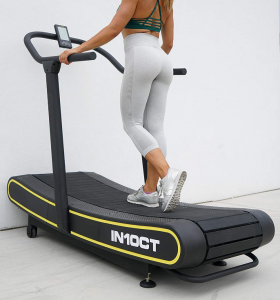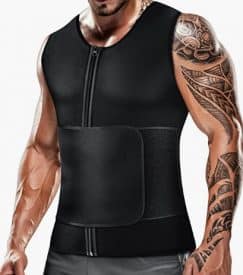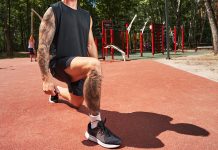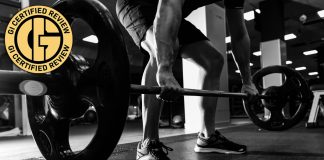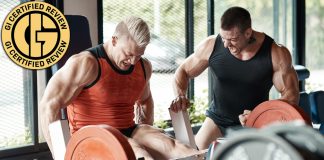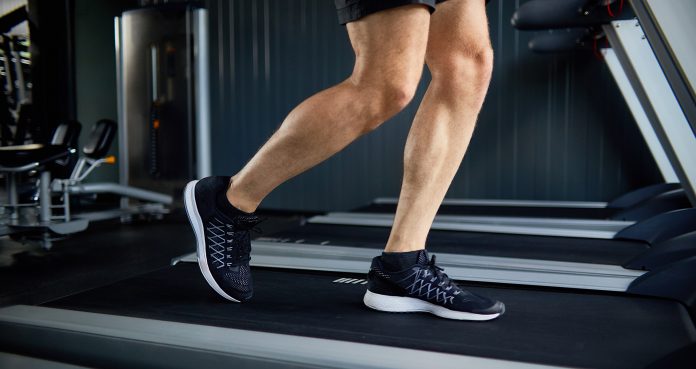
Walking allows you to burn calories and elevate your heart rate without impacting workout performance and recovery.
Never overlook the importance of leg day! Many gym-goers focus on their upper body, neglecting that the largest muscles in the human body are found in the lower extremities (1). Developing a strong lower body is crucial for maintaining proper posture and balance, reducing the risk of injuries, and enhancing your ability to perform quick, powerful, explosive movements. But who says leg day only involves grunting on daunting movements like the squat?
Walking is an excellent way to keep your legs robust and vigorous and burn more calories while increasing your heart rate. It stands out as the simplest, most accessible, and highly effective form of exercise. What makes walking great is that it doesn’t impact recovery or performance as other more intense cardiovascular exercises such as running would. Therefore, you can do it more often without affecting your workouts or progress.
Despite its benefits, walking is often underestimated as a form of physical activity. It doesn’t require any special equipment or machines; it’s a straightforward, efficient, and convenient way to engage your lower body muscles.
This article provides a comprehensive guide on effectively executing different variations of walking workouts. It also highlights the numerous health benefits associated with walking.
Walking Workouts
Walking is effective for burning calories. People who spend more extended time walking live longer, have lower medical care demands and live healthier lives (2).
The walking workouts below will help sculpt and tone your legs, improve your fitness, and burn more calories. Note that before starting any of these walking workouts, it’s essential to do warm-ups like stretches and jumps. They help to get the blood flowing and pump more oxygen into your muscles. Also, ensure you have comfortable and fitted footwear to prevent injuries when performing any of these workouts.
The Quick Walk
This walking workout begins with walking as fast as possible for ten or fifteen minutes from your starting point. Performing this workout targets your calves, hamstrings, and quads. Note the distance you cover within those minutes and walk back quickly, slowing your pace as you return to your starting point. Every time you do this walk, aim to increase your speed and distance covered from your start point.
The Belly Burster
This workout will surely burn many calories. You perform this workout by flattening your stomach as much as possible, pushing it in towards your spine. Maintain this position while walking as long as possible, but don’t hold your breath.
The Treadmill Walk
The treadmill is perfect if you’re considering using a machine or equipment for walking. It tones your legs and burns calories, targeting the hamstrings, calves, glutes, and quads. When using the treadmill, always start with comfortable speeds and progressively increase your pace. This study shows the improved effects of leg skeletal muscle mass when using a treadmill (3).
The Uphill Walk
This workout effectively activates and induces muscle hypertrophy in the glutes, calves, and abs. During this workout, it’s typical for people to walk up and down a hill for about five to eight minutes. Next, quickly walk on an even road for about two minutes and repeat the uphill climb.
Stair Walk/Climb
This walking workout is effective for burning calories and toning your legs. It targets your glutes, calves, abs, quads, and hamstrings. You can do this workout anywhere stairs are available by incorporating any of the below different stair movements:
- Walking up and down the stairs
- Walking up the stairs sideways
- Walking the stairs sideways, crossing the bottom foot over the top foot. Repeating this, facing the other direction
- Running up the stairs and coming down, slowing
- Climbing the stairs two feet at a time and coming down quickly, using each step
Endurance Walk
Endurance walks, involving long walks outdoors, take a lot of time but are worth it for burning calories and strengthening your legs. Rather than focusing on intensity like other walking workouts, endurance walks focus on distance. Find a long trail at the park and try to walk it. Shoot for at least three miles, but you can do more as you improve your endurance. They’re also great for the mind. Research shows that outdoor workouts improve mental health (4).
You must have a map and some supplies before you engage in an endurance walk. The best way to perform this walking workout is to move comfortably and not tire yourself quickly. Make sure you have comfortable clothes and shoes with a convenient weight for your backpack. Note that you are to be prepared for different terrain and weather conditions. This can increase the workout’s difficulty and lead to dehydration in hot conditions. So be prepared and drink plenty of water.
Weighted Vest Walk
Scientific design and compression help you correct posture, special neoprene materials provide immediate abdominal pressure on waist and back support, Neopreno hombre helps perfectly fit your body contours, comfortable snaps to keep your shoulders straight and make you look more confident. This body shaper men sauna sweat workout vest can keep you warm in cold days.
Walking with a weighted vest adds more resistance. This puts more tension on target muscles, including the quads, calves, and hamstrings, increasing muscle mass and strength. Adding resistance also significantly increases calorie burn in the body.
To do this walking workout, wear a weighted vest and walk slowly for about eight to ten minutes from your starting point. Note the distance covered and walk back to your starting point. Do this continuously until you feel ready to increase the distance covered. This study shows using a weighted vest strengthens the lower body and burns more calories (5).
Follow us on Instagram, Facebook, and Twitter for more fitness advice!
References
- Ito J. (1996). Morphological analysis of the human lower extremity based on the relative muscle weight. Okajimas folia anatomica Japonica, 73(5), 247–251. https://doi.org/10.2535/ofaj1936.73.5_247
- Nagai, M., Kuriyama, S., Kakizaki, M., Ohmori-Matsuda, K., Sone, T., Hozawa, A., Kawado, M., Hashimoto, S., & Tsuji, I. (2011). Impact of walking on life expectancy and lifetime medical expenditure: the Ohsaki Cohort Study. BMJ open, 1(2), e000240. https://doi.org/10.1136/bmjopen-2011-000240
- Singh, G., Kushwah, G., Singh, T., Ramírez-Campillo, R., & Thapa, R. K. (2022). Effects of six weeks outdoor versus treadmill running on physical fitness and body composition in recreationally active young males: a pilot study. PeerJ, 10, e13791. https://doi.org/10.7717/peerj.13791
- Gladwell, V. F., Brown, D. K., Wood, C., Sandercock, G. R., & Barton, J. L. (2013). The great outdoors: how a green exercise environment can benefit all. Extreme physiology & medicine, 2(1), 3. https://doi.org/10.1186/2046-7648-2-3
- Puthoff, M. L., Darter, B. J., Nielsen, D. H., & Yack, H. J. (2006). The effect of weighted vest walking on metabolic responses and ground reaction forces. Medicine and science in sports and exercise, 38(4), 746–752. https://doi.org/10.1249/01.mss.0000210198.79705.19


